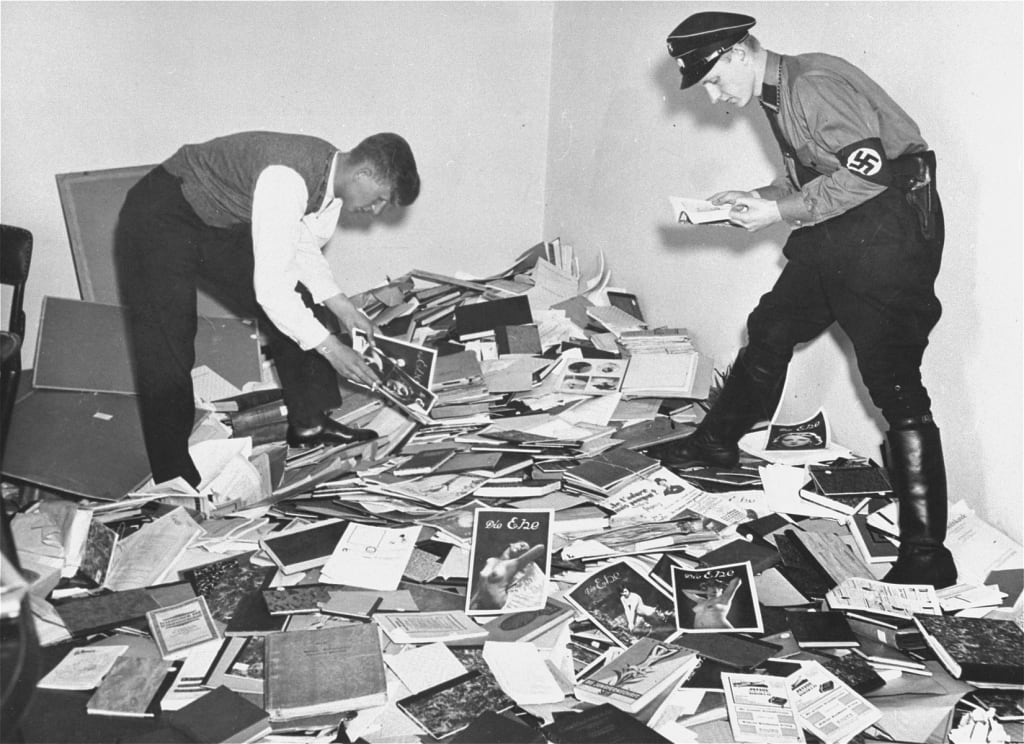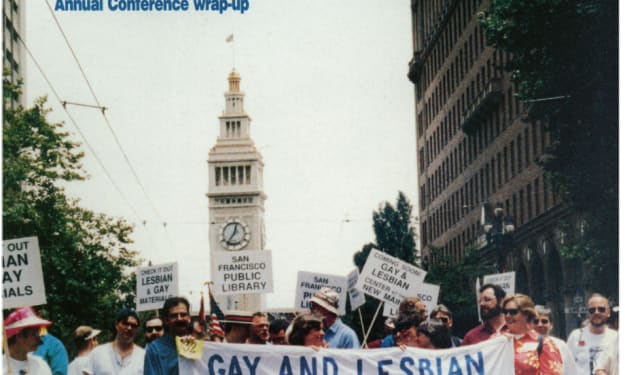LGBTQIA+ Organization
Germany: The Beginning of Community Organization

Germany is the nation where the LGBT community first organized themselves publicly. That first gay organization in 1897 was the Scientific-Humanitarian Committee, founded by Magnus Hirschfeld, Max Spohr, Erich Oberg, and Franz Josef von Bulow. The group sparked both a gay political movement and a women's political movement. Together they laid the foundations for modern German and other LGBT movements.
Because the German movement had so many academic and scientific ties, most women were left out of the academic arguments, but were very much a part of the public gay community. The movement spoke to both men (Adam, 19) and women. It offered them a lifeline for their emerging identities, and for isolated but aware lesbians and gay men, it influenced their thinking and helped lay the groundwork for movements that emerged after WWII (Adam, 19). Hirschfeld and the gay movement put high priority in overturning the German penal code law known as paragraph 175.
"Hirschfeld attempted to include women in the committee work (Adam, 22),” but there wasn't a lesbian movement on its own. Politically active German lesbians were usually active in two or more groups, a feminist / political group and a gay group, and maybe a social group or hobby group.
Feminist issues of the time were seeking more rights as women, but within traditional women's roles. Only a few women challenged gender roles in the early 1900's. Helene Stocker was one who "argued against the mainstream, declar(ing) that many of the attributes of femininity were the result of socialization and not women's inherent nature (Adam, 23).”
In 1904 Anna Ruling tried to get the women's movement to push for more education and professions for women. She felt that knowledge and economic freedom might help lesbians from having to rely on marriage for their support (Adam, 23).
It pushed the issues of women's feminism in directions a lot of women weren't really prepared for, and splits began to divide the movement. There were several feminists who focused their efforts on WWI and peace efforts, which may have been the straw that broke the camel's back for the German feminist movement. Things were moving too far away from traditional women's roles, and women didn't know what to do with that.
While by 1910 the women's movement purged it's organizations of radicals, it did "rally against a 1911 Reichstag committee proposal to extend Paragraph 175 to women (Adam, 28)." It is interesting to note that after the purge of radical feminists, the women's movement lost its strength, much like The National Organization of Women (in the U.S.) did in the late 1970's when it purged its organization of lesbians and other ethnic and minority groups.
"Lesbian organizations remained closely aligned with gay male forms throughout the Weimar Republic, with social clubs typically meeting in the same clubhouses and journals printed on the same presses as their male counterparts (Adam, 23-24)." It became obvious that gay organization was affecting change in the public community and in the law.
During the 1920's there were actually 14 bars and clubs for lesbians and over 60 meeting places for gays and lesbians. In both, the political and women’s rights groups used the same meeting places and the same equipment to promote individual group needs, though on some issues they were able to work together.
They were fighting for LGBT rights and women's rights when Adolf Hitler came into power. One of the first things he did was create a clear-cut division between the private and the public spheres. For women that meant being pushed completely out of the workforce and into the home. For men it meant expanding Paragraph 175 and criminalizing homosexuality. Also, The Reich Committee on Homosexuality and Abortion was created. This committee and their actions had a devastating effect on German lesbians.
In 1933 Hirschfeld's Berlin Institute for Sexology was raided. There was a series of public book burnings and gays and lesbians quickly got the message. The information network that had been created went underground as magazines and newspapers were banned, and known gays and lesbians began disappearing.
They wound up in prisons and work camps long before WWII. There was no “one size fits all” experience. The punishments in prison often depended on the prison model of operation. The Weimar Republic model was about punishing a crime, not about punishing people for being who they were. While they could be very strict prisons, they did not go out of their way to punish inmates in degrading ways. The newer prison models under Hitler were intentionally cruel whenever possible.
Both types of prisons were often filled with political dissenters, lesbians, gays, Jews, and gypsies who might get caught up in random roundups while on the streets after curfew hours. Before long, prisons were overflowing.
When war was eminent, the burgeoning LGBT world shrank into nothingness. Gays, Lesbians, Gypsies, and Jews were moved to concentration and death camps. Often lesbians were given the label of Asocial when taken to camps. There were some lesbians who were forced to work in created brothels at the camps. These women did not survive very long. They suffered way too much degradation before death (Schoppmann).
After the war gay men were still vilified, and those still alive were moved from camps to prison, sometimes for the rest of their lives. Paragraph 175 was expanded again and those anti-gay policies remained in effect clear up until 1969.
In the late 1960's and early 1970's The GDR and the Federal Republic of Germany (West and East Germany) decriminalized homosexuality. An LGBT movement began the attempt for equal rights. That fight for tolerance and rights dragged on for a long time. In 1993 those struggles were still going on.
Today there is much more tolerance and openness towards LGBT individuals though there is still more work to do on that front. Today's Berlin respects that past history, and tries to offer up a friendly presence to LGBT travelers, who are always welcome.
Sources
Barry, Adam. The Rise of a Gay and Lesbian Movement. New York: Twain Publication. 1995.
Dynes, Wayne R. (Ed). Encyclopedia of Homosexuality. Garland Publishers. New York. 1990. 2 Vols.
Grau, Guntar (Trans.)Patrick Camiller.. Hidden Holocaust?: Gay and Lesbian Persecution in Germany 1933-1945. Cassell Villiers House, London. 1995.
Hendriks, Aart, Rob Tiellman, and Evert van der veen (Ed). The Third Pink Book: A Global view of Lesbian and Gay Liberation and Oppression. Prometheus Books. Buffalo NY. 1993.
Schoppmann, Claudia Trans. Allison Brown, Days of Masquerade: Life Stories of Lesbian Women During the Third Reich. Columbia University Press. 1996.
About the Creator
CL Robinson
I love history and literature. My posts will contain notes on entertainment. Since 2014 I've been writing online content, , and stories about women. I am also a family care-giver.
Enjoyed the story? Support the Creator.
Subscribe for free to receive all their stories in your feed. You could also pledge your support or give them a one-off tip, letting them know you appreciate their work.






Comments
There are no comments for this story
Be the first to respond and start the conversation.